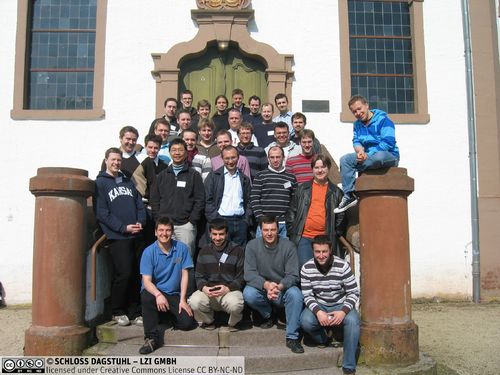GI-Dagstuhl Seminar 08163
Modeling Techniques for Computer Network Simulations
( Apr 15 – Apr 18, 2008 )
Permalink
Organizers
- James Gross (KTH Royal Institute of Technology, SE)
- Mesut Günes (FU Berlin, DE)
- Klaus Wehrle (RWTH Aachen, DE)
Contact
External Homepage
A crucial step during the design and engineering of communication systems, respectively protocols, algorithms and architectures, is the estimation of their performance, and the understanding and visualization of the micro and macro behavior of the systems and their components. Typically, this can be (more or less) realized by applying three different methodologies: (1) experiments with real systems and prototypes, (2) analytical techniques and (3) simulation.
In research and development of communication systems the latter two methodologies are most important during the conceptual phase, since prototyping such systems is mostly infeasible due to financial and technical constraints. Simulation is particularly used for systems which are highly dynamic and whose properties are difficult to be captured in a mathematical or analytical way. Often, analytical methods show the borderline behavior of system characteristics or offer upper and lower bounds for specific research questions. But, more fine grained analysis does often lead to an unacceptable complexity of the analytical models. However, simulation offers scientists a controlled environment in which a system can be investigated in all levels of detail. Different parameter sets and scenarios can be analyzed with comparably few effort. Thus, simulation is a powerful and versatile methodology to analyze and visualize the behavior and performance of communication systems.
Considering simulation as the methodology to analyze a communication system (which even may not exist), one has to consider a very important fact: All simulations are carried out on models of the system under investigation and not on the system itself. All models have to be created in advance.
Since analyzing a system without prior modeling is not possible, and as all inferred knowledge is deducted from the model itself, the process of modeling is crucial for the overall process of simulation-based evaluation. Furthermore, the underlying model has a big influence of the results' significance.
Considering the importance of the modeling process for the quality of the observed knowledge, it is very surprising and disappointing, which techniques are known and applied to guarantee high-quality simulation models. Typically, next to the following guidelines, there exist no further rules, methods, techniques or just a simple cookbook to create and assure adequate simulation models.
- All actions, events and properties have to be modeled as accurate and detailed as possible.
- But on the other hand: ... only as accurate and detailed as actually needed and required.
Another important aspect of simulation-based analysis is the comparison of approaches, like protocols and algorithms. Up to now, this is mostly not possible in the area of communication systems, since most models are highly specialized for the respective investigation. Often, models are made for a distinct context of investigation, and hence, they are neither compatible nor comparable to other competing models or approaches. This yields to the problem that a reasonable comparison between research carried out by different parties is practically not possible.
In our opinion, these problems result from fundamental deficits in the field of modeling techniques for network simulations. Currently, almost no and especially no consistent methods and techniques for creating adequate simulation models exist in the field of networking research. Common literature does not really address this topic, and furthermore, typical simulation courses and discussion groups on network evaluation do only focus on the fundamentals of simulation, but not on techniques for modeling the systems to investigated.
Within this research seminar, we want to address this problem and reconsider current practices of modeling in the field of network research. We want to discuss and find necessary characteristics for techniques for the creation and deduction of models: Taking existing problems and methods as a starting point, we want to discuss new possible solutions. Furthermore, we want to analyze and discuss modeling techniques used in other research areas (e.g. software engineering, information systems, robotics, computational engineering etc.) and discuss their possible contribution to the modeling process of communication systems. In addition, we want to accumulate and discuss different basic components that are required to model a communication system, like modeling mobility, topologies, traffic, signal propagation, user behavior, and much more.
One major goal of this seminar is the creation of a first compendium that provides an introduction into the modeling process of communication systems and a broad overview over existing models and tools.
Furthermore, a second goal is to derive a set of requirements and a cookbook for consistent modeling of communication systems. We aim at a general modeling framework for consistent use which takes the various aspects of communication systems into account. As modeling is about to be more unified, future models are also expected to be compatible to such a framework which then profits from its own extensibility.
Keywords
- Simulation
- Modeling
- Communication Systems
- Networks
- Protocols


